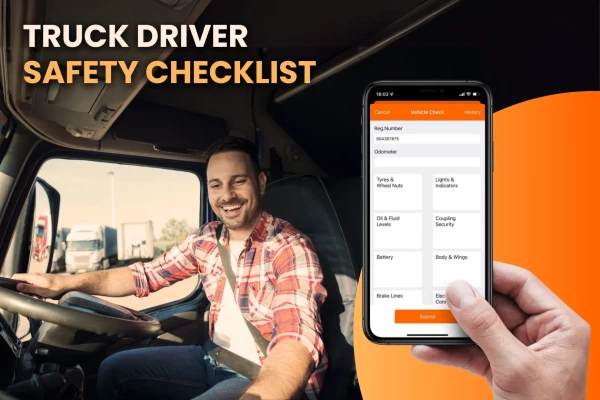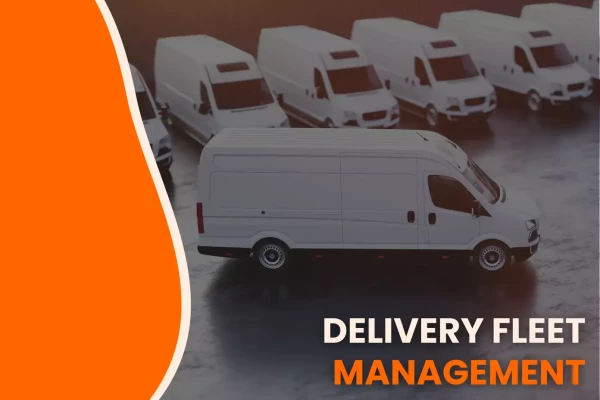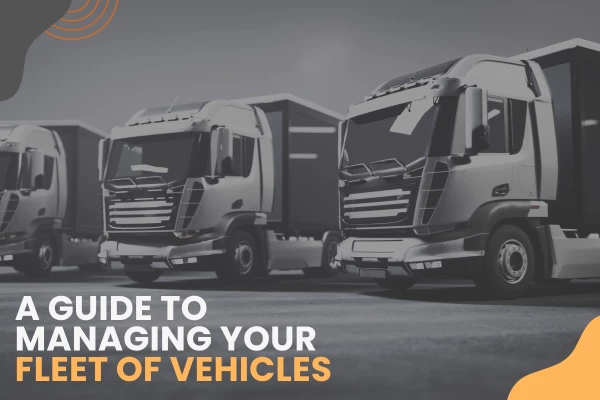Could Telematics for Business Really Improve Your Operations?

by
Alina Kostukova
May 15, 2023
Today, many businesses use telematics to monitor operations and make data-driven decisions. The field has applications for fleet management and transportation logistics, providing real-time insight into the usage and efficiency of vehicles and drivers.
But what does telematics mean and could it improve your operations? This article will look at how telematics systems work and explore the pros and cons of telematics for business.
How telematics systems work
Telematics combines two scientific disciplines.
- Telecommunications - communication over a distance.
- Informatics - the practice of processing data.
It enables users to transmit and receive information remotely, typically from multiple devices over long distances.
In vehicles, telematics systems use GPS technology, sensors, and onboard diagnostic codes to collect data on things like location, engine diagnostics, and driver behavior.
A GPS receiver or “black box” that can send, receive, and store data is installed in each vehicle.
The telematics system connects via the vehicle’s onboard diagnostics (ODB-II) or CAN-BUS port with a SIM card. It uses an onboard modem to communicate with the company’s central server, transmitting via a cellular network, satellite communication, 4G mobile data, or General Packet Radio Service.
You might be wondering, what’s the difference between GPS and telematics?
Telematics systems include GPS tracking, but have greater data-handling capabilities. Once the information reaches the server, it’s analyzed and processed into usable information and made accessible to other company devices through a secure website or mobile app.
Examples of telematics for business usually relate to vehicle tracking for delivery and courier services, car rental and leasing companies, and field sales teams.
It’s used in supply chain management and logistics, as well as in construction and mining industries to monitor safety.

Many modern commercial vehicles come pre-loaded with GPS tracking, while smart vehicles already connect to the internet and support Wi-Fi. You can enhance your telematics by integrating it with fleet management software, as well as tools for inventory management, customer service, payroll, and enterprise resource planning (ERP).
ERP works similarly to telematics in that it can offer you real-time insights into different aspects of your business processes. It allows you to analyze performance and identify areas for improvement.
In this way, these two solutions go hand-in-hand, so modern businesses can process data to streamline management and gain a competitive edge. Let’s look at a few other benefits of telematics.
Benefits of telematics in business operations
As we’ve seen, telematics systems can deliver real-time insights into vehicle activity, which enables fleet operators to make improvements where needed.
1. Reduced fuel and operational expenses
Fuel cost is a significant expense for any business with its own fleet of vehicles, and telematics helps you find ways to make your journeys more efficient. For example, the system will automatically calculate distances driven and fuel costs for different vehicles and geographical areas.
As well as monitoring fuel consumption, you can measure engine idle time and train drivers on how to maximize fuel efficiency. By comparing the statistics for different drivers and vehicles, you can easily see who needs guidance.
Using GPS tracking and real-time traffic information, telematics enables you to plan the shortest routes between destinations. Not only does this reduce unnecessary mileage and fuel usage, it’s also better for the environment.
You can measure the weight of each load and consider reducing it to further reduce fuel consumption. If you’re tracking freight, you can even access gyroscopic information to detect tipping or rollover of containers, then adjust future loads or packaging to avoid damage to goods.

2. Better customer communication
Customers expect strong communication from businesses, whether you’re updating the status of a delivery from your ecommerce warehouse or telling them when their taxi will arrive. With telematics, you can send regular, accurate updates at every stage of the journey.
Since you’ll know exactly where your vehicles are at all times, you can easily pass this information on to your customers. For instance, during last-mile delivery, you can send the customer a live-tracking link with a highly accurate ETA (estimated arrival time).
If a customer calls to ask about delivery, your support team can access the real-time data, too. Telematics also helps you to guide drivers to the exact address, ensuring more deliveries arrive on time, which will improve your CSAT scores.
3. Improved dispatching schedules and tracking
Another benefit of telematics for business is that it helps to keep dispatching schedules running smoothly. Because it’s easy to view vehicle and driver data, you can map out accurate timescales and base scheduling decisions on average speeds.
With the ability to track vehicles in real time, you can get an overview of your fleet’s locations and ensure you send the nearest available driver when a new job comes in.
You can quickly adjust the route if there’s heavy traffic or a diversion and alert drivers to dangers like icy roads or flooding.
Telematics devices can also tell you if one of your vehicles is used outside of a designated area. In addition, you can attach GPS trackers to trailers and other non-motorized assets to ensure they’re in the right places—and locate them if they go missing.
4. Actionable insights on fleet condition and maintenance
As well as monitoring fleet activity, telematics gives you vital information on the condition of your vehicles. You’ll be able to run engine diagnostics remotely and spot any issues with battery voltage or fuel leakage, then get them fixed before they turn into expensive problems.

From usage data such as odometer readings and engine run-time, you’ll know when to schedule vehicle check-ups and preventative maintenance. This will help to keep your vehicles operational for longer and guard against potential safety violations.
When your vehicles are inspected regularly, they’ll be more efficient as well as safer for drivers.
5. Automated payroll and staff management
Automated telematics technology helps you handle payroll and staff management, even if you have hundreds of employees across the globe. You can verify that your employees are receiving the right amount of pay and working the correct number of hours.
The system collects accurate data on hours of service (HOS), automating the process so that you don’t have to manually feed this information into your payroll system.
Reducing the administrative burden makes your business more productive and minimizes potential errors.
Telematics is also useful for staff scheduling. You could integrate it with an HR mobile app to help you track attendance and vacations—and employees can log in to view their shifts, paychecks, and taxes.
6. Accurate risk assessment and fraud prevention
Telematics enables you to identify risky driving behavior and potential fraud. The onboard device can monitor vehicle speed as well as things like harsh braking and rapid acceleration. It can check if drivers are wearing their seat belts and ensure they’re not working beyond their contracted hours.
Many telematics systems include dashcams, so you can see actual footage of drivers and use it for training purposes.
You can also show data to your insurance company to help reduce your premium. Courts often accept video footage as proof, if you get into an accident.
Tracking systems mean drivers can’t submit fraudulent timesheets and fuel card records or use company vehicles for personal reasons. They increase the chances of recovering the vehicle if it’s stolen and you can also combat theft by placing trackers on your cargo.

Challenges of implementing telematics
So, what about the disadvantages of telematics for business? There are a few challenges, although the benefits tend to outweigh them.
Resistance to adopting new technologies
It can be difficult for people to adapt to new tech, especially when they’re used to doing things a certain way. Drivers may object to having their behavior monitored or filmed—they might feel that you don’t trust them or fear being publicly called out on their driving.
However, it’s essential to communicate the importance of telematics to your team and explain how it benefits everyone, especially in terms of safety.
Staff should be trained on how to use the technology and you could incentivize it by rewarding driver performance.
Data security and privacy concerns
If your drivers use their own cars for work aka grey fleet or take vehicles to their home after a shift, they may worry that you’ll continue to track them outside of working hours. Some telematics providers offer a “privacy mode”, enabling fleet tracking to be switched off when necessary.
Many business owners have concerns about data security when they sign up for telematics. With information transmitted via cellular or wireless networks, what if it gets intercepted?
The answer is to protect your operations by choosing a solution with top-notch security and make sure your other systems are compliant, too.
Implementation and maintenance costs
How much does a telematics system cost? It depends on how many vehicles you have and what type they are, as well as how advanced the tech is. You could use basic GPS tracking, but it doesn’t give you the insight that telematics does.
If you want a complete telematics solution with all the bells and whistles, it will cost you more—but you should see a much better ROI. The data will reveal hidden costs and show you ways to make savings through efficiency.
Don’t forget to factor in installation (ideally by specialists), staff training time, and ongoing maintenance costs.

Final thoughts
Using telematics for business brings some challenges, but the benefits are widespread. You can track your entire fleet at a glance, monitoring the health of vehicles as well as driver behavior. Fleet managers can then use this data and analytics for efficient route planning, saving on fuel costs.
Telematics also enables you to provide regular and accurate customer communication and improve supply chain visibility. Automated systems boost productivity and reduce errors, while the data insights let you improve driver safety and compliance—and lower insurance premiums.
About The Author
Alina Kostukova
Skilled marketing content creator with a background in digital media and public relations. Focused on creating first-rate text and visual content that stands out and tells compelling stories.










